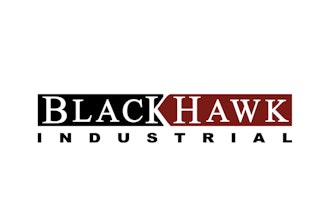Aggressively investigating “what if” scenarios for a global supply chain doesn’t just make it less vulnerable to risk. It can bring changes that enhance agility and quickly make the most of unexpected market opportunities.
Every supply chain professional knows it’s a dangerous world out there, full of highly volatile and unpredictable elements that can grind production to a halt, hold up cargo in stubborn bottlenecks, drive up prices and drive down demand, all in the time it takes for a crack of thunder to rumble across the skies. Of course, that’s nothing new. Some would argue the sheer number and variety of things to worry about can seem almost overwhelming – including natural disasters, terrorist attacks, computer viruses, theft, hijack, “shrinkage,” transportation and labor disruptions, new regulations, bad weather, political unrest and economic collapse. For all these reasons, risk management has become an ever-larger part of what occupies my time and attention.
However, it might surprise you that risk management is not just a defensive way of reducing the negative impact of unexpected or unwelcome events; it’s also a way to proactively boost business. The kind of thinking, planning and modeling required to anticipate and ameliorate these potentially threatening factors is also exactly the thinking that will make your supply chain more agile and therefore lead to an ability to be prepared for unforeseen opportunities.
An article by Mike Doheny, VenuNagali, and Florian Weig, published in the McKinsey Quarterly earlier this month, “Agile operations for volatile times,” hones in on exactly this point.
“Rising volatility, uncertainty, and business complexity have made reacting to—and planning for—changing market conditions more difficult than ever,” say the McKinsey authors. But smart companies who focus on supply chain agility “are also seeking ways to use volatility” in positive ways, when their strengths provide a unique market advantage. The paper goes on to cite examples of three companies doing just that.
In the hard disk drive industry, everyone was hit hard by the floods in Thailand last year. But that disruption accelerated Seagate’s already-planned initiatives to make its supply chain even more flexible, robust, resilient and responsive to change. The situation demanded that we work to utilize Seagate’s supply chain advantages even more than in the past. One change we are making, for example, is to dramatically streamline operations into fewer regionalized locations. This will give us much greater flexibility, capability and capacity to adjust to sudden changes in demand.
Today, supply chain leaders not only must know how to shift supply and distribution amid natural disasters, but they must be on the ball and agile in all kinds of other matters, such as finance amid wild currency fluctuations or political changes amid social unrest, to name but two.
Risk management, as we know, involves constantly considering “what if?” scenarios. The old, reactive mentality is to ask “what if” questions only about things that are already going wrong. But exactly the same modeling and extrapolation can be used to break apart the whole supply chain process and design it to better adapt to a new situation quickly and efficiently.
Today’s leading supply chains can be critical competitive advantages for their companies, investors and customers.
It’s imperative, though, to incessantly interrogate your supply chain with possible scenarios, good and bad, modeling outcomes and making changes in collaboration with customers, suppliers and all the major divisions within your own company, including sales, marketing, product design and manufacturing. The end result should be that smart risk management makes it easier to open the door when opportunity knocks.


















